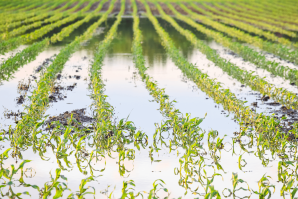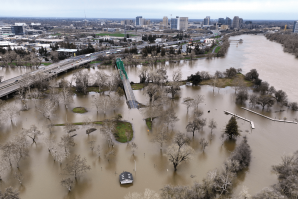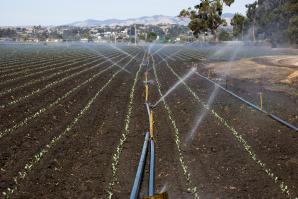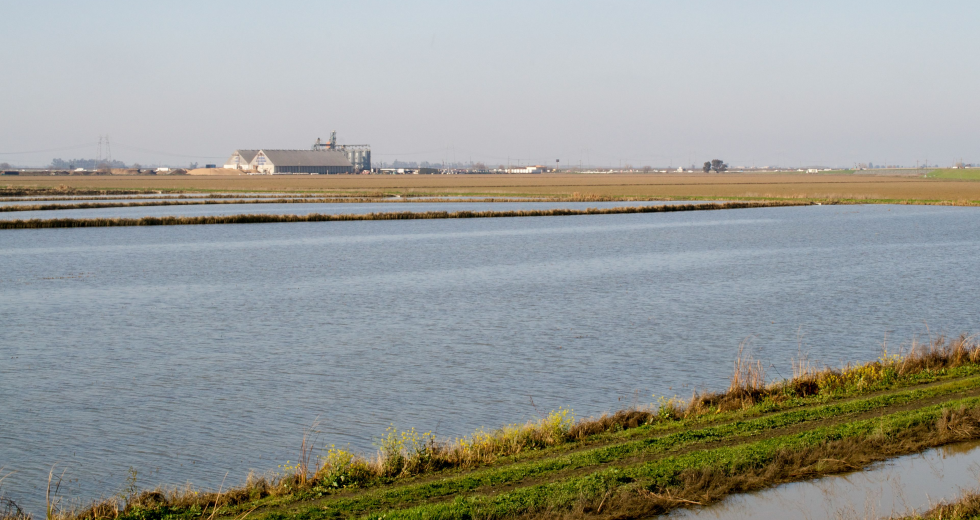In most years, California uses more water than nature can deliver. As the climate grows warmer and dryer, the state’s agriculture industry faces steep reductions in water supply and the possibility of fallowing hundreds of thousands of acres of otherwise productive farmland in order to preserve the state’s diminishing water resources.
Up to 80 percent of the water allocated for California’s homes and businesses is used for agriculture, and much of it is drawn from the state’s vast aquifers. During a typical year, aquifers provide around 40 percent of the water the state uses; in drought years, that percentage soars to 60 percent or more. The state’s aquifers can hold a lot of water — between 850 million and 1.3 billion acre-feet — but that number isn’t infinite, and California’s current rate of overdraft isn’t sustainable.
In 2014, California passed the Sustainable Groundwater Management Act with the goal of mitigating groundwater overdraft within 20 years. The UC Davis Agricultural Water Center is now working with local farmers to develop and implement water-saving strategies that will help California reach this goal. One of these strategies is managed groundwater recharge.
Groundwater recharge is a natural process that happens when rainwater collects on the surface and seeps through the ground into aquifers, or when rivers overflow during heavy storms and the excess water inundates floodplains. But because many of our floodplains have been disconnected from rivers, natural recharge doesn’t happen at the same rate it used to.
Helen Dahlke, associate professor in integrated hydrologic sciences at UC Davis, says farmland is ideal for groundwater recharge since much of it is idle during the winter when we’re most likely to have heavy rains. “We try to use that idle land and flood it intentionally with floodwater to recharge groundwater aquifers,” she says.
This is a strategy that doesn’t just work during very wet years. “Winter recharge can be done more or less any time we have some sort of excess water available,” Dahlke says, even during a dry year like 2014, when a large December storm triggered flooding in Northern California but didn’t end the drought.
Progress on managed groundwater recharge has been slow, however, and even now, almost a decade later, we still don’t have the ability to capture large amounts of water for aquifer recharge. “A lot still needs to happen to connect or upgrade surface water infrastructure to get the water to the land parcels that can take it,” Dahlke says. “In 2014, we weren’t ready for it … This year we definitely had more growers enroll into this activity, but I think we still are not anywhere close to really taking water in the amounts that would be needed to address the overdraft rates that we have.
“We’ve accumulated 21 million acre-feet in overdraft in the last three years, which currently sits in the snowpack in the Sierra Nevada Mountains and is melting. We just don’t quite know how to capture the water and store it for future years.”
Groundwater recharge is just one water conservation strategy; others can reduce the amount of groundwater farmers use, thus decreasing the pressure on underground storage. High-frequency irrigation, for example, involves applying low volumes of water often, vs. applying high volumes of water less often.
“You can think about it as giving the tree only what it needs,” says Isaya Kisekka, professor of hydrology and irrigation at U.C. Davis. Traditional irrigation methods result in wasted water, since a tree only uses some of what’s applied to the soil, and the rest either runs off or percolates below the root zone. “By giving the tree only small amounts of water,” Kisekka says, “you eliminate all these other losses.”
High-frequency irrigation can save a significant amount of water. Kisekka says he works with one almond grower in Yolo County who was able to save between 7.5 percent and 12.5 percentover typical water use, though he notes that water savings tend to vary by climate.
Bullseye Farms in Woodland grows row crops and orchard crops like almonds, pistachios and walnuts. Nick Edsall, orchard manager at Bullseye Farms, says his farm has adopted a few different water conservation strategies, including irrigation management and groundwater recharge. “In the wintertime our trees are dormant and they’re not actively growing,” he says, “so we can put floodwater onto the orchards for a certain amount of time without hurting our trees.”
Another strategy Bullseye uses is planting cover crops in the orchards. These are crops that aren’t harvested; instead, their purpose is to improve the soil and help it absorb water. “The roots go into the soil and open up pores,” Edsall says. “The pores in the soil help the water to penetrate the soil and get into the ground.”
Cover crops aren’t just good for water conservation, Edsall says, they also attract pollinators and beneficial insects that help reduce the need for pesticides. And when the cover crop dies, it acts like a mulch, improving soil health, regulating temperature, and reducing evaporation.
Planting more crops to use less water seems counterintuitive. “We were kind of like, after a certain point we’re going to want to get rid of the cover crop because we don’t want it stealing water from the trees,” said Edsall. But anecdotally, he says Bullseye has noticed a difference in how much time they can go between irrigations with a cover crop in place. “Even when it was nice and thick and using water it was conserving more water because of the shade and the mulch.”
Strategies like groundwater recharge, high-frequency irrigation, and cover cropping can have a big impact on California’s overall water use, but farmers and scientists alike acknowledge that it won’t be enough to make up for the years of overdraft that have been necessary to sustain the nation’s most productive agricultural industry.
Edsall thinks more can be done to capture and store rain aboveground. “Surface water is an incredibly important part of our agricultural system, especially here in California,” he says. “We need to stop this water where it falls and get it into the soil.”
Kisekka, though, thinks California will also need to make some hard choices, which will ultimately mean reducing the number of irrigated acres in the state. “But we can do it in a strategic way,” he adds. “We can be smart about how we reduce the amount of land that we irrigate.” This might mean farmers will need to make practical choices about what and how much they grow — fewer pistachios and almonds, for example, and more annual crops that can be grown or not grown depending on how wet or dry the year is.
“To be climate resilient, we have to be smart,” Kisekka says. “We cannot just grow these perennial crops, or permanent crops that are not flexible to climate extremes. We need to have a mix of crops that gives us the flexibility to manage a drought or a flood.”
This means agriculture in California might have to change, but it doesn’t have to die — even in the face of an uncertain climate and an unpredictable water supply.
–
Stay up to date on business in the Capital Region: Subscribe to the Comstock’s newsletter today.
Recommended For You

Saving the Rain
Flooding our fields helps store water in belowground aquifers
California’s shrinking aquifers represent both an opportunity and a problem.

Drought and Deluge
Experts are racing to protect the Central Valley from a catastrophic flood
Unlike “The Big One” earthquake that is overdue along the San Andreas Fault, experts don’t have an ominous name for a flood of biblical proportions that is likely to inundate the Central Valley within the next 500 years.

Perspective: California’s Long and Complicated History With Water
The battle for more water has been fought for decades with no solutions
From 19th century battles between farmers and hydraulic gold miners over debris polluting rivers to 21st-century political duels over spawning salmon, Californians have squabbled incessantly over how water should be captured, allocated, conveyed and priced.



